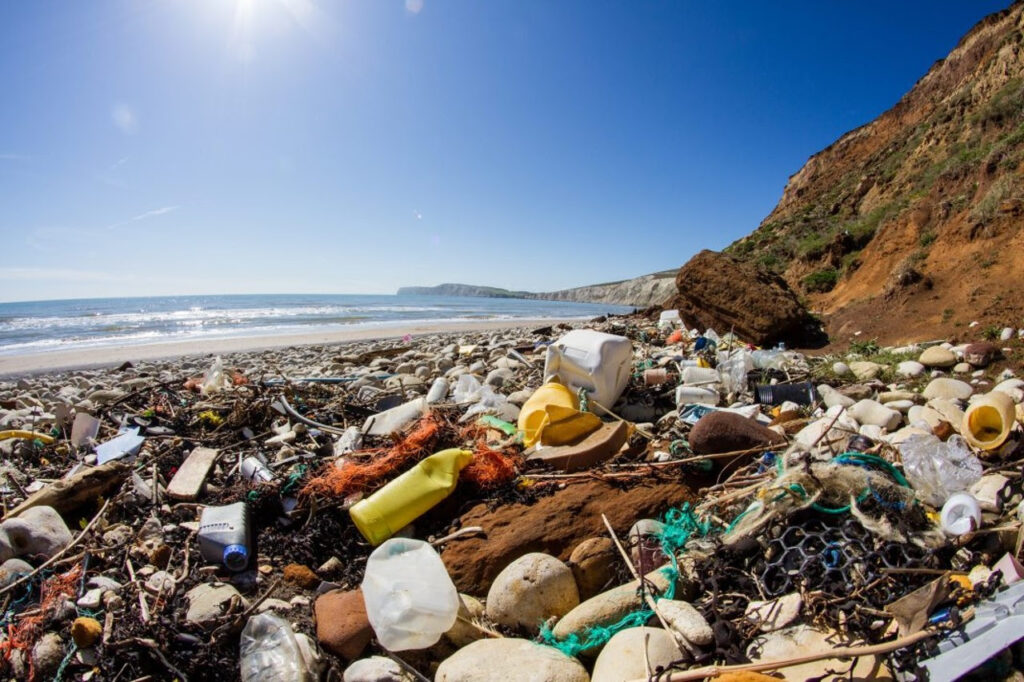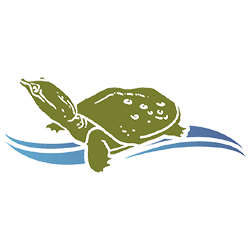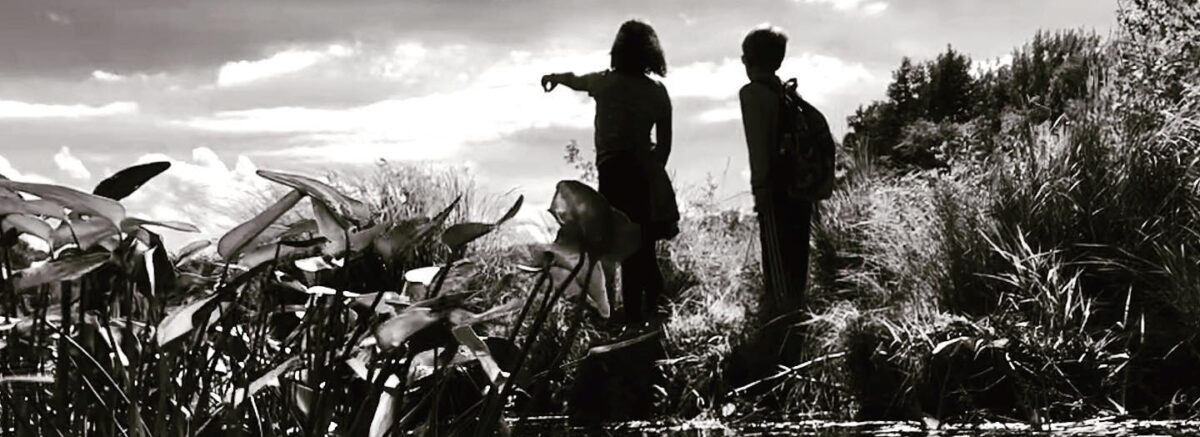Welcome to our summer issue of the Spine-E-News, so named after the
creature featured in our logo, the Spiny Softshell Turtle (Apalone spinifera).
If you’re not yet a subscriber, you can sign up HERE.
Our Community Response Team Investigates Concerns

| As a Waterkeeper Affiliate, the Chautauqua- Conewango Consortium has the capacity to accept concerns about the conditions of all the waters in the Conewango Watershed and follow up on them. Here are some of the actions that your Consortium has taken in the past few months to protect our waters: + Report of asphalt millings being placed near a stream was reported to the proper authorities. + Concerns were raised about whether the PFAS in three of the four water wells for the village of Mayville could leach into Chautauqua Lake. We have received no confirmation that lake water has ever been tested. We remain vigilant about this emerging contaminant. + Followed through on a complaint of federally protected wetlands being filled. + Sent a team to the wind turbine frac out incident. The material that flowed out of the area was a clay material used as a lubricant for drilling. The spill was being cleaned up in an environmentally responsible way. + Currently working on a wood chip and sawdust pile that has not been properly permitted by the DEC. + Identified an early-season algal bloom. Wind and rain later broke up the bloom. It is important to note, however, that even if blooms break up, the toxins remain and just wash downstream for others to deal with. To report a condition or action that appears questionable or inappropriate for the environment, please submit a report to our Community Response Team |
Summer Updates
| Many individuals and groups participated in our Spring Watershed Clean-Up – removing trash from the landscape throughout the Conewango Creek watershed. Every piece removed of litter removed from the land is something that did not make it to the water. Thank you to everyone who helped with this effort! Give Big CHQ was a 24 hour online fundraising event designed to raise awareness, community engagement and essential dollars to support local nonprofits. Hosted by the Chautauqua Region and Northern Chautauqua Community Foundations, this extraordinary event inspired people to come together, show pride in their communities and support local causes. The Consortium raised $2147 thanks to the generosity of over 20 unique donors. These funds will be used to provide opportunities and resources to teach our community about the importance of protecting our water for all the creatures who depend on it. Check out our membership page. Thank you to those who donated during this community giving event. Still looking to give? Donations are always welcome through our webpage. Stay tuned for a status update on Chautauqua Lake in our next issue of the Spine-E News! |
They’re Everywhere: Harmful Algal Blooms

| Does it seem as though Harmful Algal Blooms (HABs) are constantly in the news? It’s not your imagination. HABs are increasing globally in both marine and freshwater systems. According to the National Oceanic and Atmospheric Administration (NOAA), human activities that alter ecosystems including pollution, increased nutrients, food web alterations, invasive species, and climate change may all contribute to the increasing frequency and severity of HABs. A recent report out of Florida suggests that spraying herbicides to remove invasive aquatic plant species may lead to increased algal blooms as the decaying vegetation releases nutrients that fuel algal growth. This is one reason why the Consortium believes that preference must be given to non-chemical plant management and control options that prevent or mitigate nuisance aquatic plant growth. Not all algal blooms produce toxins, but some produce neurotoxins, poisons that act on the nervous system; heptotoxins, poisons that act on the liver; and dermotoxins, posions that act on the skin. People and their pets can be exposed to the toxins by direct contact with a bloom, drinking or swallowing water, or eating fish or shellfish contaminated with the toxins. The toxins can even be breathed in as tiny droplets of aerosols carried in the air by wind or in the air surrounding a bloom stirred up by a boat motor passing through a bloom. We are not immune to HABs here in the Chautauqua-Conewango Watershed. Algal blooms occur in Conewango Creek, Bear Lake and Cassadaga Lake and have been recorded in Chautauqua Lake since the 1930’s. HABs have been documented since 2012. Every week during the bloom season, multiple locations on Chautauqua lake plus the Outlet and the Conewango Creek are sampled for blue-green algae and tested for toxin levels. It is difficult to predict HABS, but with the warm weather we’ve been having, they are likely to occur this year as well. This year, scientists are working to better understand the dynamics of HABs in Chautauqua Lake through the research of the Jefferson Project. Learn more about HABs on our website. |
By 2050, Plastic Will Be More Abundant in Our Waters than Marine Life

| Plastic pollution – particularly in our waterways – is a growing global concern. We believe, as stated by the Break Free From Plastic Movement, in a world where the land, sky, oceans, and water are home to an abundance of life, not an abundance of plastic, and where the air we breathe, the water we drink and the food we eat is free of toxic by-products of plastic pollution. The Chautauqua-Conewango Consortium’s own Dr. Sherri Mason is a leading researcher on plastic pollution in freshwater. Check out this podcast where Dr. Mason discusses her work and learn what we can all do to be a part of the solution to plastic pollution. |
Microplastics in the Great Lakes Food Web

| How about a meal of fish and plastic? A new study shows that microplastics floating in the Great Lakes are becoming tangled up with a type of algae. The algae is becoming a nuisance because of its long, stringy nature and is expanding its range to greater depths. The intermix of these algae with the natural fish food, zooplankton, means that the microplastics will enter the food chain. 97% of the fish studied had microplastics inside them. Read more here |
Links and Quick Takes:
| + We’re traveling again and enjoying the great outdoors in our region. Check out these travel reviews of New York’s best lakes. 10 Best NY Lakes + Water Shortages dominate the news today. This discussion looks across the country and down the road to help us understand the dimensions ofd this crisis. National Geographic-America’s Looming Water Crisis + Is an Amendment needed for a Constitutionals Right to clean water? And here’s something that’s really cool! Click anywhere on this map of the contiguous United States to track the path of a raindrop to the ocean. We offer this E-News to you as a friend and one who cares about and will advocate for healthy waters in our Western New York and Pennsylvania area. But if you have not done so already we also hope that you will choose to formally join with us and become a member of the Chautauqua-Conewango Consortium, a Waterkeeper Alliance Affiliate. When you join the Consortium, you are adding your voice to preserve and protect that water. We rely on membership of people like you who believe that everyone has a right to clean drinkable, swimmable, and fishable water. The Consortium is a committee of the Conewango Creek Watershed Association. Its 501c3 status makes your donation 100% tax-deductible. You are joining hundreds of others in western New York and Pennsylvania, along with vacation homeowners from all over the country who support our stewardship of the waters of the entire Conewango watershed. For the water, thank you. |

